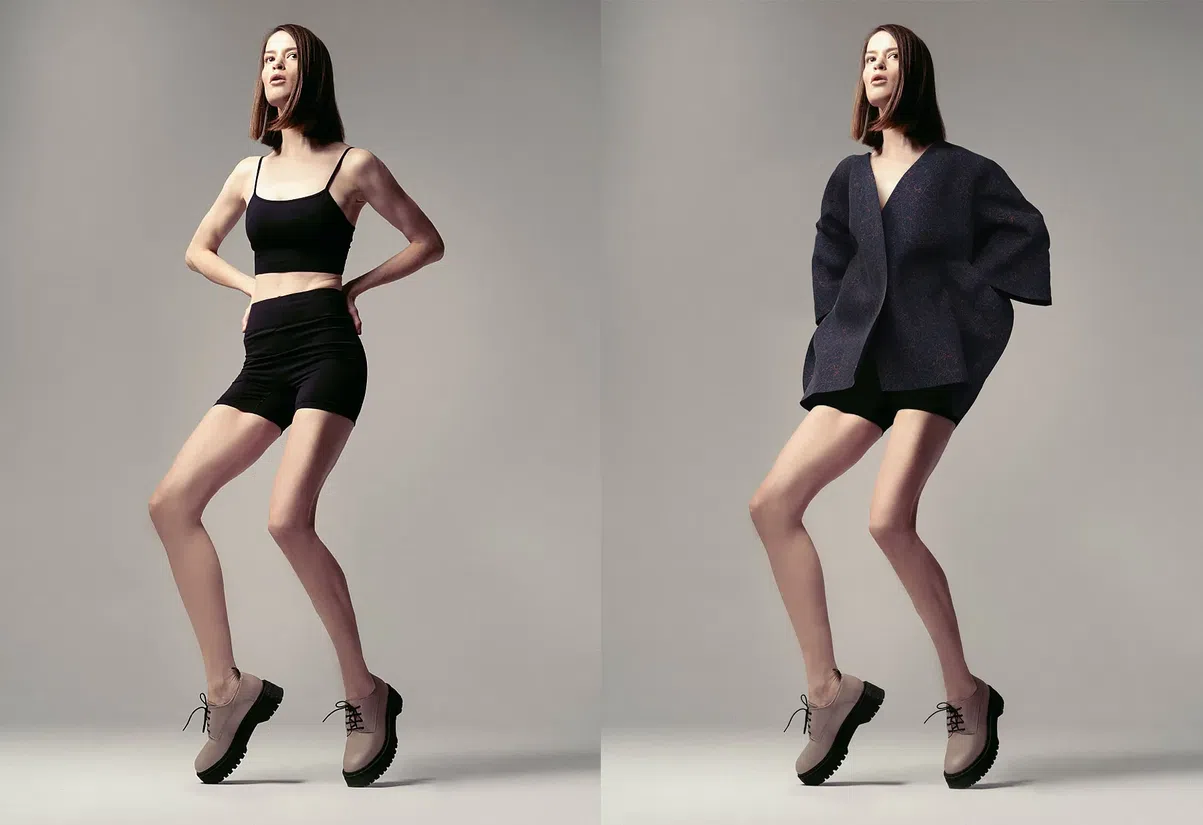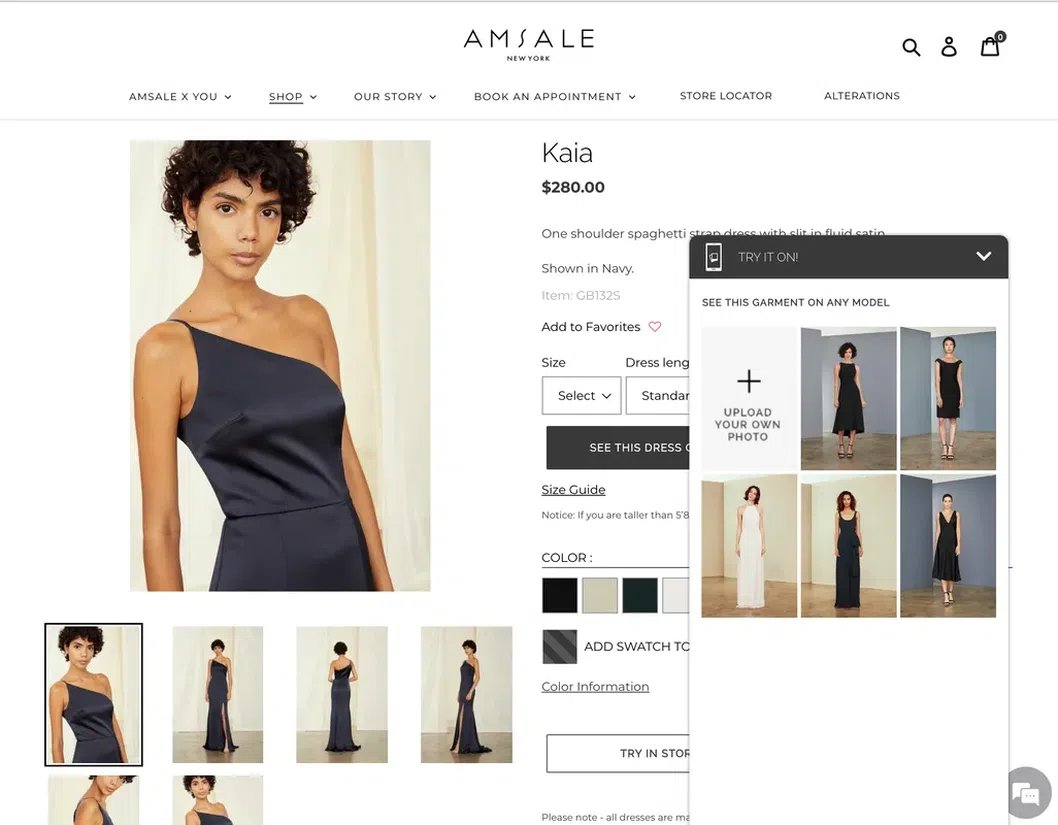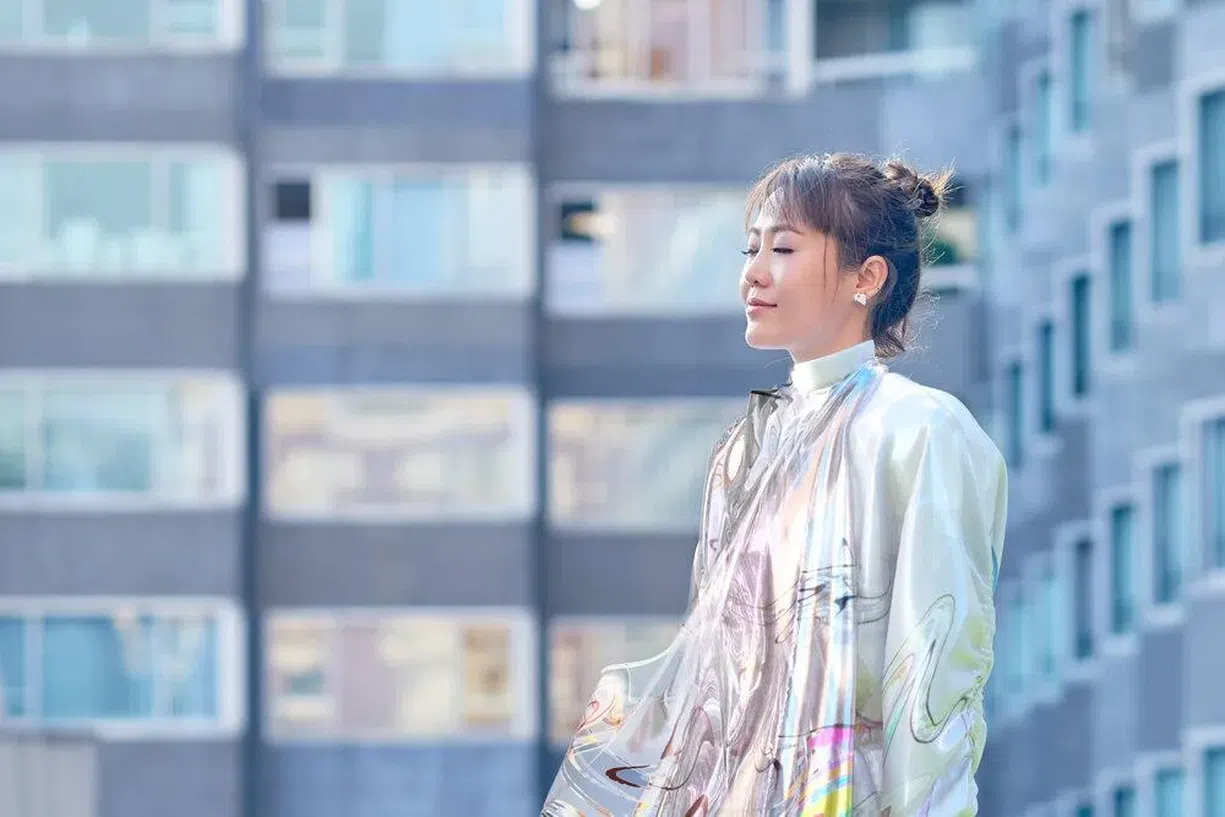
Digital Fashion #1: The clothes that don’t exist. What is digital fashion?
Date 05 May 2023
Imagine there is yet another lockdown. You are still working from home, all the work and private meetings are conducted on Skype, Zoom or Messenger. You are shopping online again, not only for basics but also for some designer clothes for work. Right after the payment, the clothes are immediately delivered, but you can’t try them and even touch them.
These are the virtual filters, available in every instant messenger you use on a daily basis. You put them on yourself with a click or a swipe, right before joining a meeting and turning your webcam on. This is what the near future may hold for digital fashion.

What is digital fashion?
Digital fashion is clothing existing only in the digital world, for example as a picture, animation, or as an element of augmented reality. The clothes are very realistic but are created entirely in graphic programs.
Nowadays digital fashion can be divided into at least four categories:
- Clothes as an overlay — they are designed and constructed entirely in graphic programs (for example CLO3D & Photoshop). Then, the client who wants to wear such a piece of clothing sends the photo of themself to the designer. In the next step, the designer fits the piece of virtual clothing to the silhouette and sends the picture back. Overall, the client doesn’t buy the literal piece of digital clothing, but the edited picture, where an overlay of digitally designed clothing suits their silhouette.
This approach seems to be an unoriginal one, but it is indeed a way to create unique visual content for social media purposes. This is also a first step to familiarize us — the recipients and creators of new media — with the idea of using digital fashion. Showing digital creation in social media, attracts attention and educates others (just like Snapchat attracted attention and accustomed us to using AR on a daily basis).

- 3D clothing on avatars — they are also fully “sewed” in dedicated graphic programs but then rendered as 3D models and animated. This kind of digital clothes is mostly presented in motion, on the digital models — avatars. Observing the 3D clothing model on the moving silhouette, we can see more details, such as the way how the fabric lays on the body or the way how it is behaving in the move. This is a great advantage for clothing companies since it allows them to present a sneak peek of a new collection and probe the customer’s interest.
It’s important to say that the rendering and the animating process requires extra work from designers — for example, it’s a bit time-consuming to perfectly adjust the way of fabric movement (notice that in real life, the light silk behaves differently than more condensed leather).
Even though professional programs for designing digital clothes start to automate the animation process, fashion companies more willingly experiment with still 3D digital models. A great example here is Ralph and Russo, who made a photoshoot for their haute couture collection with virtual models and clothing.

- Physically existing clothing with the AR effect — they are created physically so that they can be actually tried on. What makes them unique is that there is a marker printed on clothing, allowing to use the augmented reality filter on it. We can then see on the smartphone screen how the print is changing, or how the animation is appearing on the piece of clothing. This mechanism can be compared to an Instagram filter that recognizes the face — in this case, the thing recognized is the marker or the color of one element on the T-shirt.
- Clothes generated by artificial intelligence is the perfect solution for creating virtual fitting rooms in online retailers’ shops. How does it work? It’s a bit similar to the first example where the designer puts an overlay on the customer’s photo. The difference is that all work with layers is done by artificial intelligence (AI/GE) instead of a designer. It automatically combines the photography of the customer and the photography of clothing pieces and instantly gives back the effect.
The final photo is not always ideal, because the AI bases on its “knowledge” from analyzing thousands of pictures of human silhouettes and clothing. Also, the whole process of programming the neuron network is both time and resources consuming. Despite of that, we can already find first examples of such virtual fitting rooms on the market:

Source: Puma
Does it make any sense?
Digital fashion has great business potential, clearly noticed during the 2020 pandemic and lockdown.
Beforehand this area of fashion was treated more like an interesting experiment tied to the gaming world (mainly because of collaborations between top fashion houses and iconic games developers).
Now the lockdown has shown that digital clothing may become a needed answer for Internet personalities, fashion magazines, designers, and many more — a recent example of the great usage of digital clothes in the fashion industry is Vogue Taiwan “pandemic” issue cover.
What is also worth mentioning is that digital fashion is an alternative to fast fashion. At the end of 2019, the problem of returning clothes was widely discussed, as many influencers and fashion bloggers used new clothes only for social media photoshoots or to post some unboxing videos. In order to resist this trend, one of the fashion companies created a virtual capsule collection that was described as the first-ever fashion collection that had no negative impact on the environment.

Source: Amsale.com
Who would buy that?
While these solutions clearly have their spot in the business, you may wonder if the average Joe would be prone to buy something for 20$, something that they would never even touch?
You may be surprised to learn that now the digital clothes are selling out very quickly — mostly because they are strictly limited, and their main group of purchasers (innovators and early adopters) are ready to pay dearly to be one of the first digital clothes owners. The most famous purchase of digital clothes is The Fabricant’s dress. It was bought in 2019 by Richard Ma for 9500$. The purchaser got it for his wife and commented: In 10 years time everybody will be ‘wearing’ digital fashion. It’s a unique momento. It’s a sign of the times.
As of now, digital clothes are created in so-called digital fashion houses: The Fabricant, Carlings, Rahbau, and a new Polish brand called Nueno.

Source: graziadaily.co.uk / The Fabricant
Friend or foe? Technology versus traditional fashion
The pandemic verified not only our fashion needs but also the way digital fashion started to be seen. It became clear that in order to function in the virtual world the virtual clothes may appear to be absolutely enough for us as consumers. Also, for fashion companies, digital clothing pieces can become the perfect tool that allows better planning, executing production, or even decreasing the e-commerce returns.
Technology is not necessarily fighting the fashion that we know — new ideas are actually helping fashion to grow, to acknowledge new circumstances and address new needs and challenges. We may still doubt that spending 20$ for a piece of clothing that won’t be even touched will be a thing, but as Vogue Business presupposes, likes and heart reactions for the photos with the virtual clothes on social media will minimize this psychological barrier.
MAŁGORZATA KUDŁA
Founder of nuenofashion.com and co-founder Sparing Digital.
Insights
View AllLet us inspire you.
- Case studyNUENO: Poland's first digital fashion brand
![Digital Fashion #1: The clothes that don’t exist. What is digital fashion?]()
- Case studyVOGUE POLAND: Mobile App
![Digital Fashion #1: The clothes that don’t exist. What is digital fashion?]()
- InsightDigital Fashion #2: How to use digital fashion on the magazine cover?
![Digital Fashion #1: The clothes that don’t exist. What is digital fashion?]()
- InsightDigital Fashion #3: How to get closer to customers? AR used by fashion brands
![Digital Fashion #1: The clothes that don’t exist. What is digital fashion?]()



